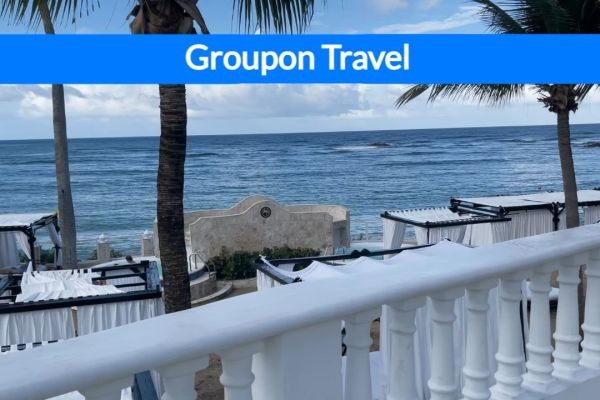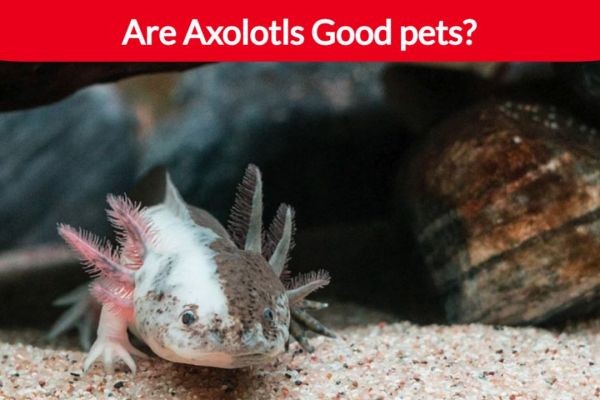Chart a course through the rich cultural tapestry of Polynesian people, where myths and celestial navigation reveal a world beyond imagination.
08/12/24 • 91 Views
You'll discover that Polynesian culture is deeply intertwined with myths, heroism, and celestial navigation. Central to their history, figures like Maui and Pele aren't mere legends; they represent complex interactions between humans and the cosmos, core to the community's moral fabric. Navigational expertise, essential for their expansive sea voyages, mirrors in-depth knowledge of the stars and ocean. Rites like ancestral worship and navigational ceremonies highlight a profound respect for lineage and spirituality. This culture's resilience is visible today through a fusion of ancestral customs and modern influences, a continuum linking past and present in dynamic ways. Exploring further reveals even deeper insights into their vibrant society.
Key Takeaways
- Polynesian myths, like those of Maui and Pele, highlight interactions between humans and the divine, shaping cultural beliefs and practices.
- Advanced ancient navigational techniques allowed Polynesians to explore and settle across vast oceanic expanses, spreading their culture.
- Rituals such as navigational star ceremonies and ancestral worship underscore a deep reverence for ancestors and the cosmos.
- Traditional arts, including tattooing, music, and dance, express social identity, genealogy, and spiritual connections within communities.
- Contemporary Polynesian identity merges traditional practices with modern influences, evident in art, urbanization, and efforts to preserve language and culture.
Polynesian Creation Myths
How do Polynesian creation myths, such as the Te Kore-Te Po-Te Ao Marama, articulate the complex interplay between humans and the divine?
In Polynesian creation myths, you'll find that the origins of the cosmos and human existence are deeply entwined with the divine. Through narratives like Maori mythology's Rangi and Papa—the sky father and earth mother whose separation facilitated the creation of the world—you see a depiction of the cosmos as an interconnected entity, where divine actions set the stage for human existence. Similarly, in Hawaiian mythology, Pele's dominion over volcanoes portrays the gods' immanence in natural landscapes, influencing human interactions with their environment and highlighting a reciprocal relationship between the divine and the mundane.
Legendary Gods and Heroes
In Polynesian mythology, legendary figures like Maui and Hina embody the quintessential traits of heroism and divine wisdom, influencing cultural norms and ethical values across generations. These Polynesian myths, teeming with legendary gods and heroes, aren't mere stories but pivotal in shaping societal behaviors and imparting moral lessons.
The tales of Maui's audacity in capturing the sun and Hina's reverence for the natural order underscore a profound spiritual connection with the natural world. Their narratives, rich with cultural significance, serve as allegories that reinforce the enduring legacy of these figures. Through such myths, you grasp how deeply these heroes resonate within the Polynesian ethos, continuously molding their worldview and strengthening community bonds.
Navigation and Sea Lore
As you explore Polynesian cultural history, you'll find that ancient navigational techniques were critical to the expansion across the Pacific. Skilled navigators relied on the guidance of star pathways, a method where the night sky served as a complex map leading to distant islands. This reliance on celestial bodies highlights a sophisticated understanding of astronomy and oceanic environments, pivotal in sustaining Polynesian exploration and settlement.
Ancient Navigational Techniques
Navigators of ancient Polynesia mastered celestial techniques and environmental cues to traverse vast oceanic expanses with remarkable precision. As you explore further into their world, you'll appreciate the intricate skills and knowledge that define their journeys.
- Celestial Navigation: Polynesian navigators utilized the stars and sun to chart their courses across the seas.
- Wayfinding Techniques: They interpreted ocean swells and cloud formations to determine directions and pinpoint locations.
- Voyaging Canoes: The double-hulled waka exemplified traditional Polynesian craftsmanship, tailored for extensive maritime expeditions.
- Oral Traditions: Crucial navigational lore was transmitted orally, safeguarding ancient seafaring practices across generations.
- Navigational Skill: Their profound understanding of the natural environment enabled them to locate distant islands with astonishing accuracy.
Star Pathways Guidance
Exploring the 'Star Pathways,' Polynesian navigators utilized celestial bodies to guide their sea voyages, skillfully reading the night sky to guarantee successful navigation across the Pacific Ocean. This mastery of celestial navigation, a cornerstone of Polynesian seafaring traditions, exemplifies the profound interconnectedness between humans and the cosmos. Through the Polynesian Voyaging Society, this ancestral knowledge is preserved, ensuring that the techniques of oceanic navigation continue to thrive.
| Element | Description | Importance |
| Celestial Bodies | Stars, sun, and moon used for navigation | Vital for route determination |
| Environmental Cues | Bird migrations, ocean currents | Enhance the accuracy of travel |
| Cultural Heritage | Wayfinding techniques | Sustain seafaring legacy |
These elements highlight the deep connection with the natural world and emphasize the enduring legacy of Polynesian navigators.
Cultural Impacts of Migration
Migration played a significant role in shaping the cultural landscape of Polynesia, as diverse traditions and languages merged through the interactions of different island communities. You'll see how the extensive seafaring skills of the Polynesians enabled not just travel but also the spread of cultural elements, fostering a dynamic process of cultural transformation. The linguistic diversity you observe today in Polynesia stems from this intricate web of migration and settlement history.
- Cultural Synthesis: Blending of rituals and customs from different islands.
- Linguistic Evolution: Development of new dialects through inter-island communication.
- Technological Exchange: Sharing of navigational and fishing techniques.
- Community Formation: Establishment of new societal norms and structures.
- Ideological Influence: Integration of diverse beliefs and value systems.
Rituals and Spiritual Practices
As you explore Polynesian cultural history, consider the profound significance of ancestral worship in their rituals. These practices aren't merely ceremonial; they serve as a conduit for maintaining the lineage and wisdom of forebears, ensuring continuity and spiritual guidance. Additionally, navigational star ceremonies exemplify the integration of astronomy and spirituality, essential for both voyaging and cultural identity.
Ancestral Worship Significance
Ancestral worship in Polynesian culture profoundly shapes spiritual and communal life by fostering a deep connection between the living and their forebears through various sacred rituals and ceremonies. You'll find that these practices aren't merely ceremonial; they're a bridge that maintains the spiritual connection across generations, embedding a sense of community and continuity within the cultural heritage.
- Offerings: Food, chants, and prayers are presented to honor ancestors.
- Guidance: Ancestors are believed to offer protection and advice from the spirit world.
- Sacred Sites: Ceremonies often occur at family altars or significant locations.
- Life Events: Key milestones include ancestral rituals to reinforce bonds.
- Cultural Preservation: These traditions help pass down crucial cultural knowledge and foster unity.
Navigational Star Ceremonies
Navigational star ceremonies in Polynesian culture not only serve as a method for oceanic exploration but also embody the profound spiritual relationship between the people and the cosmos. Polynesian wayfinders harness celestial navigation, meticulously observing star patterns to guide their voyages across the expansive Pacific. This practice, a cornerstone of wayfinding, necessitates a deep-rooted understanding of the interconnectedness of celestial and earthly domains. Through these rituals, you're tapping into ancestral wisdom, ensuring cultural continuity while journeying across the vast oceanic stretches.
Each ceremony strengthens community bonds and reaffirms a collective identity rooted in a shared celestial heritage. These wayfinding practices illustrate not just survival skills but a sophisticated environmental and spiritual literacy, pivotal for the endurance of Polynesian seafaring traditions.
The Significance of Tattoos
In Polynesian culture, tattoos, or Tatau, serve not merely as body art but as profound expressions of one's social status, lineage, and personal life stories. As you explore further, you'll realize that these markings aren't just decorative but are imbued with significant cultural and spiritual meanings. They're meticulously crafted through traditional methods, symbolizing a rite of passage and a profound connection to one's ancestors.
- Traditional Methods: Utilizing bone combs and hand-tapping techniques.
- Social Status: Tattoos indicate one's place within the social hierarchy.
- Genealogy: Designs often trace personal and familial history.
- Spiritual Significance: A bridge to the spiritual world and ancestral homage.
- Rite of Passage: Marks important changes in an individual's life.
Traditional Music and Dance
Polynesian traditional music and dance embody the islands' vibrant cultural identity. Rhythmic drumming, chanting, and expressive movements narrate the community's myths and lived experiences. These performances aren't just artistic expressions but are essential for perpetuating cultural heritage. Instruments like the ukulele and drums are central, creating melodies that enhance the storytelling woven through the hula dance. This dance form, renowned for its grace and emotive power, utilizes gestures and bodily movements to depict ancestral tales and daily life, thereby preserving and passing down important knowledge.
Through this rich tradition, Polynesians celebrate their cultural diversity and maintain a deep connection to their past. This ensures that their unique heritage thrives in contemporary society.
Polynesian Culinary Traditions
Exploring the culinary traditions of Polynesia reveals a rich tapestry of flavors and techniques deeply tied to the islands' natural bounty and cultural practices. You'll find that Polynesian cuisine isn't just about sustenance but also a profound expression of identity and heritage.
- Traditional Cooking: Methods like lovo feasts and lu pulu not only cook but also imbue dishes with cultural significance.
- Seafood and Coconuts: These are staple ingredients that showcase the islands' reliance on their abundant natural resources.
- Root Vegetables: Are essential for the versatility and depth they add to the Polynesian diet.
- Underground Ovens: These cooking structures are central to achieving the unique, smoky flavors emblematic of the region.
- Cultural Significance: Each meal is a celebration of Polynesian values and connection to the land and sea.
Contemporary Polynesian Identity
While Polynesian culinary traditions offer a window into the region's past, contemporary identity reflects a dynamic fusion of age-old customs and modern influences. You're witnessing a society where urbanization and migration shape daily life, yet immersion schools endeavor to root the youth in their linguistic heritage. The drive for language revival is not merely about words, but the essence of thought and tradition conveyed through them.
| Aspect | Impact on Identity | Examples |
| Art | Cultural Expression | Traditional tattoos, carvings |
| Music & Dance | Community Cohesion | Hula, Siva |
| Language Revival | Heritage Preservation | Immersion schools |
| Urbanization | Modern Challenges | Adapting traditions |
| Migration | Global Influence | Diaspora communities |
This table delineates how contemporary Polynesian identity is both preserved and transformed.
Conclusion
As you've explored, Polynesian culture is a tapestry woven from myths, migration, and mastery of the seas. Each thread, from navigational prowess to intricate tattoos, underscores a rich heritage of adaptation and spiritual depth. Your understanding of traditional music, dance, and culinary practices not only enriches your knowledge but also highlights the dynamic nature of contemporary Polynesian identity. This journey through Polynesia's cultural landscape reveals how traditions have sculpted, and continue to shape a resilient and vibrant community.









